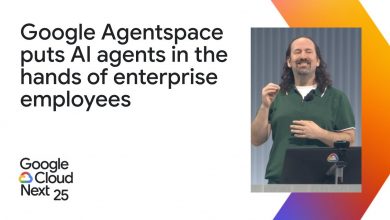 In the ever-evolving landscape of workplace productivity, a seismic shift is underway.
In the ever-evolving landscape of workplace productivity, a seismic shift is underway.
The fusion of artificial intelligence (AI) with platforms like Microsoft SharePoint and Teams is ushering in a new era of unified communications—Collaboration 3.0.
This transformative integration is not just enhancing how teams interact; it’s redefining the very fabric of how work gets done.
From intelligent automation to hyper-personalized workflows, the marriage of AI and these platforms is propelling organizations into a future where collaboration is seamless, intuitive, and exponentially more powerful.
The Foundation: SharePoint and Teams as Collaboration Powerhouses
Microsoft SharePoint and Teams have long been cornerstones of enterprise collaboration.
SharePoint, with its robust document management and intranet capabilities, serves as a centralized hub for content storage, sharing, and workflow automation. Teams, on the other hand, has become the go-to platform for real-time communication, integrating chat, video conferencing, and collaborative workspaces. Together, they form a dynamic duo that unifies content, communication, and processes.
But as powerful as these tools are, their true potential is unlocked when paired with AI. The infusion of machine learning, natural language processing (NLP), and generative AI is transforming these platforms into intelligent ecosystems that anticipate user needs, streamline workflows, and drive unprecedented efficiency.
AI-Powered Features Redefining Collaboration
1. Intelligent Document Management in SharePoint
SharePoint’s document libraries are no longer just repositories—they’re becoming AI-driven knowledge hubs.
Advanced AI algorithms, like those integrated through Microsoft Syntex, enable automated content classification, metadata extraction, and compliance management. Imagine uploading a contract to SharePoint, and AI instantly identifies key clauses, flags potential risks, and tags the document for easy retrieval. This eliminates hours of manual sorting and ensures critical information is surfaced exactly when it’s needed.
Moreover, AI-powered search in SharePoint transcends traditional keyword queries. By leveraging NLP, it understands context and intent, delivering results tailored to the user’s role, project, or even recent activity. For example, a project manager searching for “Q3 reports” will not only see relevant documents but also related Teams conversations, dashboards, and actionable insights—all curated by AI.
2. Conversational Intelligence in Teams
Microsoft Teams is evolving into a conversational powerhouse with AI at its core. Tools like Microsoft Copilot, deeply embedded in Teams, act as virtual assistants that enhance meetings, streamline communication, and boost productivity.
During a meeting, Copilot can generate real-time transcriptions, summarize discussions, and assign action items based on spoken content. Forgot what was decided in last week’s sprint planning? Ask Copilot, and it will pull up a concise summary with key decisions and follow-ups.
Beyond meetings, AI enhances chat functionalities by suggesting replies, prioritizing messages based on urgency, and even translating conversations in real-time for global teams. For instance, an employee in Tokyo can collaborate seamlessly with colleagues in New York, with AI smoothing over language barriers and cultural nuances.
3. Proactive Workflows and Automation
The integration of AI with SharePoint and Teams is automating repetitive tasks, freeing teams to focus on high-value work. Power Automate, enhanced with AI, can analyze patterns in workflows and suggest optimizations. For example, if a marketing team regularly creates approval workflows for campaign assets in SharePoint, AI can propose streamlined processes, reducing approval times by predicting bottlenecks.
Teams also benefits from AI-driven bots that handle routine inquiries. A bot integrated with SharePoint can retrieve documents, schedule meetings, or provide project updates without human intervention. These bots learn from user interactions, becoming smarter and more contextually aware over time.
4. Personalized Experiences Through AI Insights
AI’s ability to analyze vast datasets is transforming SharePoint and Teams into hyper-personalized platforms.
Microsoft Viva, for instance, uses AI to deliver tailored insights to employees. In Teams, Viva Insights can suggest focus time based on your calendar, recommend relevant training modules, or highlight critical tasks stored in SharePoint. For leaders, AI aggregates team performance data, identifying collaboration gaps or burnout risks.
This personalization extends to content discovery. SharePoint’s AI-driven home page curates documents, news, and tasks based on your role, recent activity, and organizational priorities. No more digging through folders—AI brings the right information to you.
Real-World Impact: Collaboration 3.0 in Action
The impact of AI-powered SharePoint and Teams is already visible across industries. In healthcare, hospitals use AI-enhanced SharePoint to manage patient records, with NLP extracting critical data for faster decision-making. Teams, meanwhile, enables secure telehealth consultations, with AI summarizing patient interactions for compliance and follow-up.
In finance, global banks leverage AI to analyze contracts stored in SharePoint, flagging regulatory risks in real-time. Teams facilitates secure, AI-moderated discussions among compliance officers, ensuring sensitive data stays protected. Retail giants are using AI-driven insights to optimize supply chain workflows, with SharePoint serving as the backbone for inventory data and Teams enabling cross-functional collaboration.
The Future: A Unified, AI-Driven Ecosystem
As we look to the horizon, Collaboration 3.0 promises even deeper integration. Generative AI could enable Teams to draft project proposals based on SharePoint data, or create dynamic dashboards that evolve with project needs. Predictive analytics might anticipate team conflicts or resource shortages, proactively suggesting solutions. Virtual reality integrations could merge with Teams, creating immersive AI-guided collaboration spaces.
Moreover, ethical AI frameworks will ensure these advancements prioritize privacy and inclusivity. Microsoft’s commitment to responsible AI means that as these platforms evolve, they’ll maintain transparency, fairness, and user trust.
The road to Collaboration 3.0 isn’t without hurdles. Organizations must address data silos to fully leverage AI’s potential across SharePoint and Teams. Employee training is critical to ensure adoption, as AI-driven features can overwhelm unprepared users. Cybersecurity remains paramount, as AI’s access to sensitive data requires robust safeguards.
Yet these challenges are dwarfed by the opportunities. By embracing AI, organizations can transform SharePoint and Teams into intelligent, adaptive platforms that not only keep pace with modern work demands but set the standard for the future.
Conclusion: Embrace the AI Revolution
Collaboration 3.0 is here, and it’s powered by AI. The fusion of Microsoft SharePoint and Teams with cutting-edge AI technologies is creating a unified communications ecosystem that’s smarter, faster, and more intuitive than ever before. From intelligent document management to conversational brilliance, AI is unlocking new levels of productivity and innovation.
For organizations ready to embrace this revolution, the message is clear: invest in AI-driven tools, empower your teams, and step boldly into the future of work. Collaboration 3.0 isn’t just a vision—it’s a reality, and it’s happening now. Are you ready to lead the charge?



